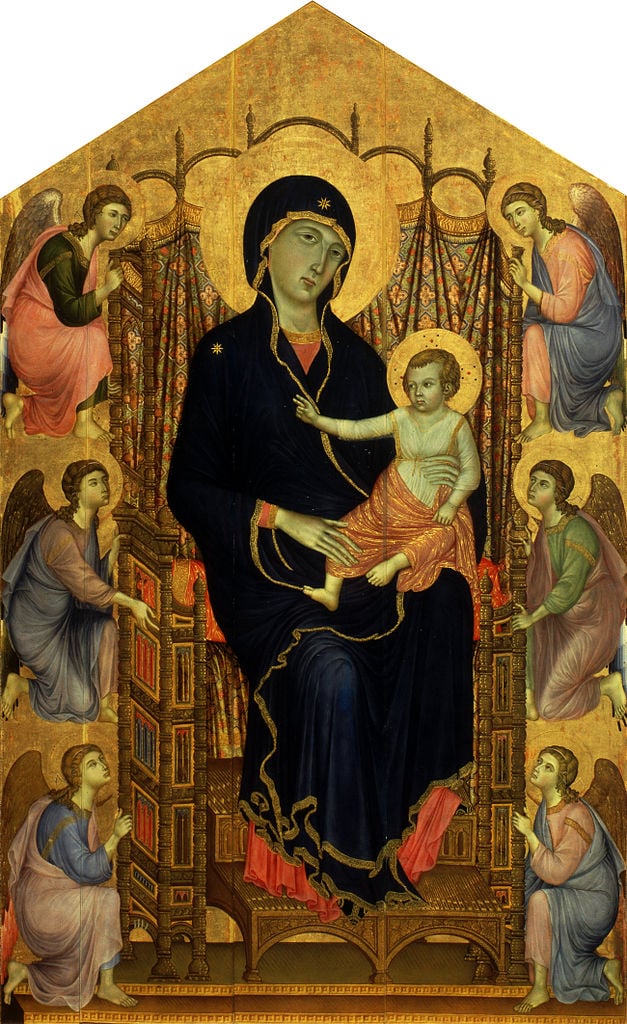
Should Italian museums return works of Renaissance art to the churches for which they were originally made? Eike Schmidt, the director of the Uffizi gallery in Florence, has been making that case—and has already singled out a proto-Renaissance masterpiece by Duccio as a possible candidate to leave the museum.
Encountering religious art in a church can provide context to help viewers understand works and how they were meant to be seen, Schmidt says. “Devotional art was not born as a work of art but for a religious purpose, usually in a religious setting,” he told the Art Newspaper.
Duccio’s Rucellai Madonna (1275), which originally hung in Florence’s Santa Maria Novella church, could be moved as part of an effort to encourage the public to encounter works beyond the galleries. Creating a diffuso (or wider museum) could also better serve public health interests.
After World War II, Italy moved much of its Renaissance art from Catholic churches to museums for safekeeping. The records regarding these transfers are limited, but Schmidt, who is also president of the government’s religious building fund, which oversees churches, says that roughly 1,000 works of religious art were transferred to divisions of country’s the cultural ministries.
Therefore, the government has the power to return artworks to their original homes in houses of worship. Churches may need to make changes to meet the conservation and security needs of these works of art, but once that hurdle is cleared, there is little standing in the way of reuniting Italian religious art with churches.